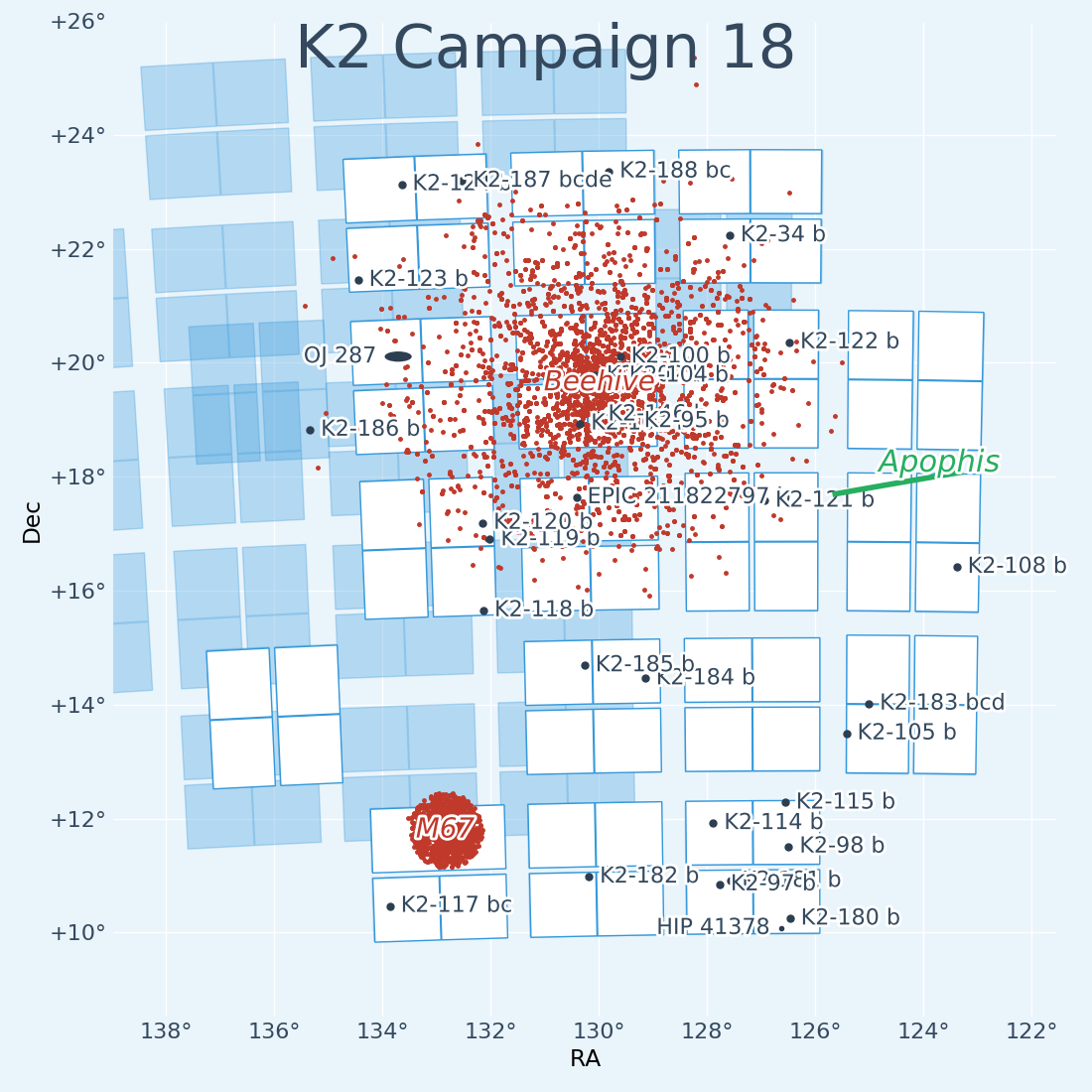The pipeline-processed data for K2 Campaign 18 are now available for download from the K2 data archive at MAST.
Campaign 18 saw Kepler's third visit to the K2 Legacy Field in the constellation of Cancer, which contains the benchmark star clusters M44 and M67. This field has now been observed during three Campaigns (5, 16, 18) across a 3-year baseline and 8-month duty cycle.
The target list contained 20,929 standard long cadence and 234 standard short cadence targets, including:
-
Two open star clusters:
- M44 is one of the most nearby open star clusters and is known to contain at least six confirmed planets (K2-95b, K2-100b, K2-101b, K2-102b, K2-103b, K2-104b). Its members were observed using standard masks.
- M67 is the benchmark star cluster with solar-like age and metallicity. Hundreds of stars in the cluster core were observed using 121 unique 40x40-pixel long cadence aperture masks which created a contiguous 440x440 pixel region. In addition, hundreds of members in the outskirts were observed using standard masks, and more than 40 targets were observed using short cadence masks.
- 42 confirmed exoplanets from Campaign 5: K2-34b, 95b, 97b, 98b, 100b, 101b, 102b, 103b, 104b, 105b, 108b, 114b, 115b, 117bc, 118b, 119b, 120b, 121b, 122b, 123b, 124b, 146b, 180b, 181b, 182b, 183bcd, 184b, 185b, 187bcde, 188bc, and HIP 41378 bcdef. Most noteworthy, the HIP 41378 system is a bright F-type dwarf (V=9) shown by Campaign 5 to host at least five planets. The majority of these confirmed planet systems are being observed in short cadence.
- Dozens of unconfirmed planet candidates from Campaign 5 were re-observed, the majority in long cadence.
- 60 low-mass flare stars and 59 variable white dwarfs were observed in short cadence.
- 13 very bright stars were observed using custom circular masks, including ζ Cancri and 25 Cancri in short cadence, and η, γ, X, 21, 29, 49, 50, and 60 Cancri in long cadence.
- OJ 287 is a well-studied bright galaxy (V=15) which is thought to show lightcurve variations due to a binary supermassive black hole at its center. It was observed in short cadence.
- 37 Solar System objects including 22 comets and trojan Asteroids, 9 faint Trans-Neptunian Objects, and the potentially hazardous asteroid 99942 Apophis were observed in long cadence.
The figure below illustrates the location of the field and its notable targets.
Users of the data are strongly encouraged to contact, cite, and collaborate with the teams who proposed the observations, as listed on the Approved Progams & Targets page.
Please keep an eye on our website for the associated data release notes.
